|
Except from Perspective Piece written for Issue 2 of Curriculum Insights "Times of reflection in recent months continue to bring me back to a January 2020 reading session. Words tucked in a chapter titled Education: Change is the Only Constant in Yuval Noah Harari's (2019) "21 Lessons for the 21st Century" stay with me. As the strangeness becomes the new normal... As an educator on a mission to support quality education for all, this year of uncertainty provided me moments of clarity and new perspective. In addition to witnessing a world of educators coming together in solidarity as one united profession, there are several lessons learned that I will carry with me beyond this unprecedented 2020 year... Read more
3 Comments
Tips and resources for educators ready to #TeachSDGs By Dr. Jennifer Williams, @JenWilliamsEdu  Excerpt from "Your SDGs To-Do List" written for EdCan Network. For years, I thought I was checking all the “global education” boxes. Committed to diversity, building global competencies, and supporting my students to seek out different perspectives and viewpoints, I was set on making sure my young students were preparing for a world that would require them to work and live as global citizens. We placed emphasis on reading about cultures different from our own. We learned about holidays and customs of people in distant lands. Daily language practice included English, Spanish, and Mandarin Chinese. As early adopters with technology, we aimed to make connections to global issues and current events around such topics as the environment and human rights... Read More Here 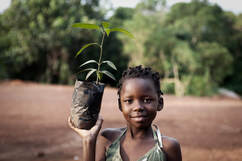 By Dr. Jennifer Williams, @JenWilliamsEdu Excerpt from Teach Boldly: Using Edtech for Social Good (ISTE, 2019): In classrooms and in schools, teachers and students are coming together to take action on creating change. Technology for social good makes it possible to share diverse perspectives, values, and beliefs. It allows for engagement through collaborative activities and coordination of efforts for increased impact. Social good provides purpose for inquiry-driven practices and project-based learning (PBL) by giving students the opportunity to engage in work that is relevant, interesting, and connected to the human experience. Though dedicated efforts for social good are relatively new in K–12 education, students and teachers are seeing how and where their voices fit in the global conversation, and that they are needed. This week, I will be heading to FETC in Miami for a week of learning and sharing on all things social good and global collaboration. As I add the final touches to my presentations and my shareable resources, I wanted to take a minute to share my sessions and to showcase all the conference sessions bringing focus to the topic of social good, student activism, social awareness, and global citizenship. I’d love to hear the sessions on your schedule, too! Please tag me in on Twitter at @JenWilliamsEdu and with the #FETC hashtag! See you in Miami! Tuesday, January 14th Explore the world with Nearpod! Go on a learning journey! Presenter: Rachelle Dene Poth, @Rdene915 1:30-3:30pm ET, Room 237 Description: Discover how to create immersive, interactive learning journeys with Nearpod. Explore resources for creating engaging lessons that expand the boundaries of your classroom, all with one multi-purpose tool. Learn many ways to use Nearpod to promote student-driven learning and provide diverse resources for students all in one place. It is a multi-purpose tool that can help educators provide enriching learning opportunities for students, as well as for students to create their own lessons and expand their knowledge and global awareness. Walk away with lessons to use tomorrow! Wednesday, January 15th Teach Boldly: Using Edtech for Social Good Presenter: Jennifer Williams, @JenWilliamsEdu 8:00-10:00am ET, Room 205 Description: Today’s students are ready to design, dream, and make the future! Join for this session customized for classrooms ready to activate positive change in teaching and learning through innovative practices, meaningful use of technology, and social action. We will outline a step-by-step plan for creating social good projects in classrooms and will dive into topics of social action, sustainable development, social-emotional learning, and digital storytelling. Top tools and projects for social good will be shared and explored and participants will leave with ready-to-go action plans to teach boldly and use edtech for social good! Let’s get going to make a positive difference for people and planet! Tools for Engaging English and World Language Learners Presenter: Rushton Hurley, @rushtonh 1:00-1:40pm ET, Room 219-221 Description: Few subjects have had technology challenge its traditional methods like languages, but the news is good: we have tools to help students make strides like never before. In this session, we'll look at a variety of tools and activities, exploring implementation, collaboration, and even a little assessment. Language teachers, this one's for you! We will use all browser-based tools, but participants should have a Google account and are encouraged to add the Screencastify extension. Designing a Culturally Relevant and Responsive Pedagogy Presenter Ken Shelton, @k_shelton 1:30-3:30pm ET, Room 240-241 Description: This highly interactive session will take participants through the identification of culturally relevant and culturally responsive pedagogical practices. The session includes examples of how to design culturally sensitive/responsive learning opportunities for students through active participation. We will look at and participate in several key instructional outcome areas as well as identify several technology-rich integration strategies. Endorsed by Future Ready Let’s Do This! Design-Thinking + Social Good Presenter: Jennifer Williams, @JenWilliamsEdu 2:00-2:40pm ET, Room 244-245 Description: Here we go! Let's get moving on creating lessons to support student action and social good! Join for a power-packed session as we dive right into lesson planning ideas to incorporate design thinking, student voice, and inquiry-based learning into instruction. We will share our top tools and favorite programs and will support you to create a plan for action for the classroom. We hope you join as we look to find ways to help our students take action on their passions and causes through purpose and collaboration! Thursday, January 16th Solving Problems in Local, Global, and Digital Communities in AR Presenters: Marialice Curran, @mbfxc and Jaime Donally, @JaimeDonally 8:00-10:00am ET, Room 236 Description: Identify and solve real problems in local, global and digital community using augmented reality. Become a digital citizen who confidently and positively engages with emerging technologies to think critically and act creatively. We'll explore examples of students using the global goals that made a positive impact on society. Participants will create their own examples in augmented reality to transform their own communities. iPad Lab. The Digital Equity Cycle: Anti-Racist, Diverse, and Inclusive Digital Education Panel Presenters: Tinashe Blanchet, @msblanchetnet Desiree Alexander, @educatoralex, Christie Kargbo, @KargboMs and Ken Shelton, @k_shelton 10:00-11:00am ET, Room 203 Description: In education, we love hot new buzz words. And recently, digital equity has become very popular with not many understanding what it entails or how to unpack it. In this session, let’s start an authentic conversation on how to unpack anti-racist, anti-bias, diverse, and inclusive digital education. Endorsed by Future Ready [Note: I won’t be able to attend this session as I am presenting at the same time--very disappointed to miss as this looks like an incredible panel. If anyone is able to share notes with me, I would greatly appreciate it: [email protected].] Bold Learning Spaces: Classroom Designs for Diversity and Social Good Presenter: Jennifer Williams, @JenWilliamsEdu 12:00-12:40pm ET, Room 207 Description: Looking to redesign your classroom or library learning space to be reflective of your students, their passions, and their identities? Innovative space designs are not only supporting skills of critical thinking, problem solving, and collaboration, but they are also showing potential to be responsive to culture, diversity, social-emotional learning, and social good. Join us for this featured session highlighting some of the most innovative school spaces in the world, including Google Next Lab, Black Girls CODE Lab, and more. Architect and Stanford professor Danish Kurani and social good global educator and literacy specialist Jennifer Williams join forces to share practical ideas for classroom teachers and librarians ready to take bold actions for their students. Let's start creating! Endorsed by Future Ready Globally ConnectED: Expanding the Walls of Your Classroom Presenters: Sallee Clark, @SalleeClark, and Jeni Long, @jlo731 1:30-3:30pm ET, Room 240-241 Description: Expand the walls of your classroom with global learning opportunities. Learn how to connect your classroom with educators from around the world, create student to student learning opportunities, and bring experts into your class from various learning fields. See examples of how we have used Skype, Empatico, Teams, The MEC, & GridPals. Leave this session with globally minded lesson ideas, a connection with thousands of educators & experts from all over the world, and a plan for how to expand the walls of your classroom. 6 Ways to Spark Social Good in the K12 Library Presenter: Jennifer Williams, @JenWilliamsEdu 2:00-2:40pm ET, Room 224-225 Description: Looking for ways to inspire your students to become instruments of positive change as global citizens? Join in this inspired session to discover how to fuel the collaborative library classroom and empower every student to advocate, innovate, and campaign. Come curate ideas as we share specific programs, tech tools and apps, and technology-infused initiatives that develop global competencies for our students inviting them to: 1) investigate the world; 2) weigh perspectives; 3) apply disciplinary and interdisciplinary expertise; and 4) take action! Giving Students a Voice through Social Media, Technology, and Opportunities! Presenter: Shannon Miller, @shannonmmiller 3:00-3:40pm ET, Room 224-225 Description: Our students love being engaged and connected to their learning, passions, and others through technology including digital tools, apps, and social media. Technology can empower students' creativity and innovation; problem-solving skills and critical thinking; communication and collaboration; and research and information fluency. In this workshop, Shannon will share several digital tools, apps, and platforms that fit into these different categories giving you a chance to try them out too. You will leave with a digital tool box that will help you empower every student through technology giving them the opportunity to shine within your classroom, community, and throughout the world. Endorsed by Future Ready Friday, January 17th Teach On Teacher: 6 Ways to Innovate with Intention Presenter: Jennifer Williams, @JenWilliamsEdu 8:00-10:00am, Room 233 Description: Hello there classroom teacher! Looking to preserve the craft of pedagogy and practice as you innovate in teaching and learning? A little overwhelmed with all the options and not quite sure where to begin? Join us as we explore six trends in education and ways you can navigate through the noise to keep authenticity and balance in your instruction and in your career. Topics will include: relationships, technology, professional development, time, teacher-advocacy, and self-care. We will outline a step-by-step approach to help keep intentionality as part of decision-making for tech tools and programs and to support you as a classroom teacher to keep connected to your purpose and passions. Hope you can join us! Impact Storytelling: Creating Purpose-Driven Edtech Projects Presenter: Jennifer Williams, @JenWilliamsEdu 11:00-11:40am ET, Room 222-223 Description: As our students come to understand their own connections to purpose, technology can help amplify and spread student messages and stories to cross over content areas and move beyond classroom walls. In developing a plan to support your students as storytellers, you can begin to consider practices that will enable students to act as illustrators of the human experience -- as stewards of truth and accuracy -- to allow for incorporation of the new while still preserving the aesthetic whole. Join this session as we showcase examples of impact storytelling from K-12 classrooms of the world and explore ed tech tools and innovative practices to help your students share perspectives through purpose-driven projects. I am honored to join the FETC Meet the Author session Wednesday at 3:15-3:45pm ET at Booth 2440 for Teach Boldly: Using Edtech for Social Good. Please stop by if you are free at that time! I’d love to meet up! Next stop: Miami! Honored to have Education Director, Paul Hutson, of Night Zookeeper share in this guest post. Be sure to catch my earlier reviews of Night Zookeeper HERE and HERE. By Paul Hutson Can gamification improve writing skills? Yes of course! You might expect us to say that, as the creators of nightzookeeper.com, a website that uses elements of gamification to inspire and motivate children to write. However, we realise that there needs to be a good balance as too much gamification can distort the goals of writing and take the emphasis away from the excitement of writing itself, and cause the student to become focused on the reward, rather than the content. It’s important that gamification isn’t used as a gimmick but as a tool to promote genuinely good writing. Richard Byrne, the Edtech blogger has said “For students who have a generally negative view of school and have become accustomed to grading practices that detract points for not doing something, a gamification of writing could feel better. Rather than seeing that they didn’t use 'x' number of vocabulary words correctly they could see it as “I scored 500 points” for using 'x' number of words correctly. ” In this way, gamifying writing is only used in the positive sense, providing rewards for work and not punishment for any mistakes, which could have a negative effect on student’s motivation. That is a concept we have tried to adhere to as we have developed nightzookeeper.com and its gamified elements. Let’s examine the gamification techniques we use in nightzookeeper.com. First of all, nightzookeeper.com rewards the amount of writing a student produces. The more writing a student produces, the higher up in a school league ranking they go. On their own profile, they also have a Night Zookeeper ranking, starting as a “recruit” with the goal of eventually becoming a “legend." Depending on the class and students, teachers can use the ranking system to instil competitiveness in their classes to encourage more and more writing. All classes in the school can be linked together in this school league in an intra-school competition, which can help to inspire more writing. This gamifying tool of rewarding how much a student writes, is also in use in our biggest competition “World Creative Writing Month,” that runs every March. In this case, a class’s word total is counted over the month and featured in a ranking system containing classes all over the world. We are always inundated with feedback from teachers about this particular gamifying of writing, which has a great effect on the motivation to write and sees students writing in the morning before school and after school to help their class climb up the rankings! Crucially all of the writing that students produce has to be “published” by the teacher, meaning the teacher can control the word count of each student and make sure the quality of writing meets a standard they have decided upon. Alongside gamifying writing by rewarding how much a student writes, we also reward the variety of writing that a student does. Nightzookeeper.com automatically gives awards to students depending on the type of writing a student has written on the website. For example, students can get the “Poem Award” if they write a poem, or a “newspaper” award when they write a newspaper article. We also have rewards for students who edit their work, or comment and give feedback on another student’s work. These awards once collected give students “orbs” (our in-game currency), which can be used to grow their Night Zoo’s and power up their animals in an RPG style game. So this gamification of writing is not just encouraging quantity, but the variety of writing a student produces.
The sense of satisfaction of earning awards (much like in regular games), really helps the motivation of students to keep on producing writing on nightzookeeper.com throughout the year. If you have experiences or opinions about the gamification of writing, please do comment below! Be sure to follow the team at Night Zookeeper on Twitter at @nightzookeeper. I'm also excited to connect with them live in Chicago at IDEAcon 2020! Message me if you have plans to head that way, too! Last month, I loved taking a deep dive into Night Zookeeper in my review [click HERE to read more] to learn how the interactive, online platform engages students in literacy and creative writing through 👾 gamification, 🌐 global collaboration, and 💻 digital citizenship (ALL my favorite things in one!). As I shared out on social media and with my PLN, I heard from so many other global educators just as excited as me and who were finding many ways to use Night Zookeeper with their elementary students. We asked educators to share more on what makes Night Zookeeper such a hit in the classroom. Here is what I found out: Brittany Seibert, Grade 2 teacher, Surrey Public School, North Dakota: We log in as a whole class the first time. After that, it is one of the Language Arts stations for the students after they get their work done! Melisa Hayes, Grade 2 teacher, Avery Elementary, Ohio: We use all aspects: from the varieties of writing, grammar games, battling, reading lite, and more! Melisa Dodd, Grade 5 teacher, Ozark Middle School, Missouri: Night Zookeeper basically houses of all of their work for the year. I use the site to create lessons to reinforce what I am doing in the classroom. Another way I use NZ is to have my students to go on to read others’ writing and leave comments. We practice how to give constructive feedback and model good writing in our feedback. This helps them read as writers and readers. Lisa Wiegand, Grade 3 teacher, Eastlawn Elementary, Indiana: I use the website as a creative writing opportunity for my students. Almost daily students are on the site. I also taken advantage of the lessons as an assessment to monitor my students' progress. Audrey Lash, Grade 2 teacher, New Britton Elementary, Indiana: It's done during our RTI intervention time for students who are not normally doing interventions during that time. They also do it sometimes after morning work is done by choice. Brittany Seibert, Grade 2 teacher, Surrey Public School, North Dakota: It is put into our daily Language Arts stations as a choice when finished with work. Sherry Willis, Grade 3 teacher, Tupelo Schools, Mississippi: I use Night Zookeeper in my centers. The students beg to use Night Zookeeper. Some of them also work on the program at home. Lisa Wiegand, Grade 3 teacher, Eastlawn Elementary, Indiana: We use Night Zookeeper for our free write assignments, and it is a daily choice on the board for when students finish other work. I also use it as a beginning-of-the-day assignment once a week. Melisa Hayes, Grade 2 teacher, Avery Elementary, Ohio: My students moan and groan when it is time to stop. On days when we have inside recess, they even continue writing! Even the most reluctant writer now LOVES to write! HUGE impact in the BEST way! Matt Peebles, Grade 4 teacher, Forest Elementary, Illinois: My class wrote over 250,000 words last year! Night Zookeeper has been a complete gamechanger to support students to be motivated, engaged, and excited to write and share their stories! Melisa Dodd, Grade 5 teacher, Ozark Middle School, Missouri: They love getting feedback from others, not just their teacher. They know they have a much bigger audience to write for. Dianne Coffey, Grade 4 teacher, Tuttle Intermediate, Oklahoma:Students improved in all areas of writing! They love it; they talk about it outside of class and with their parents. Thanks to Dianne, Melisa D, Matt, Melisa H., Lisa, Sherry, Brittany, and Audrey for sharing your thoughts and to Ms. Hayes’ class for sharing photos of learning in action! Much appreciation to the team at Night Zookeeper for offering a free trial for any educators interested in jumping in → http://bit.ly/nzkwriting.
Be sure to follow the fantastic adventures of Team Nightzookeeper on Twitter at @nightzookeeper and follow along as they travel from London to the United States for their School Tour! 🇬🇧 --> 🇺🇸
New to Night Zookeeper? Click here for a free 14-day trial: http://bit.ly/nzkwriting !
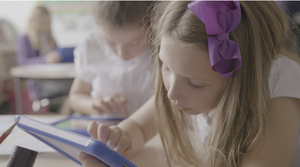
Several years ago, I read about an ed-tech team of former educators in London who were working to connect children to literacy and creative writing with their online learning platform they called Night Zookeeper. As I learned more about their approach--which emphasized connections to a student’s imagination, to global classrooms, and to best standards of practice--I was hooked!
Over the years, I have loved getting to know this great (and fun) team at Night Zookeeper and their work! From their engaging, gamified global writing competitions that involve 1,000s of schools from all around the world to their home-to-school programs that move writing past the classroom walls to involve parents and caregivers, Night Zookeeper is working to make sure developing literacy and writing are lifelong and life-wide skills we can prioritize with our students! If Night Zookeeper is new to you, I’d love to introduce you to their special online world of magical animals and literacy games that guides learners to play with vocabulary, ask and answer big, open-ended questions, and practice, practice, practice writing!
Creative writing: GAMIFIED! Through immersive storytelling and smart technology, Night Zookeeper engages elementary students into writing adventures to develop both skills and motivation. Teachers can choose from 1,000s of interactive lessons from across the curriculum (with alignment to Common Core, UK National Standards, and IB Standards). Students are able to have customized experiences with differentiation of challenges and age- and level-appropriate content. The core Night Zookeeper activities include:
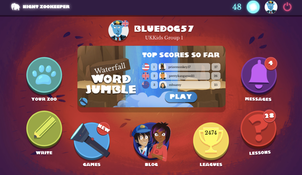
Immediate feedback
Student writing with Night Zookeeper is automatically assessed and recorded (LOVE this!). The teacher dashboard provides insights and suggested comments for students--this saves teachers time and helps to get immediate, personalized feedback back over to students. The writing tool also provides students with vocabulary suggestions for their stories along with objectives and helpful tips. Students can produce work to be published on the class blog--a great space for providing an authentic audience and giving writing meaning and purpose. Feedback on published work can come from peers, teachers, and even teachers from other countries--which takes me to the next point (and one close to my heart!). Create global connections Students from all around the world are joining in Night Zookeeper each day sharing their ideas based on their interests across genres and styles. Students as authors can publish work for their global peers, and students as readers can read and provide feedback right back to them. And, beyond the daily student-to-student writing connections, I love the Night Zookeeper global writing competitions offered throughout the year. With tickers of numbers of words that go into the millions, the competitions offer celebrations of writing and of world literacy--so fantastic!
Connections to home
Recognizing the importance of home-to-school connections particularly at the elementary level, I have always appreciated the emphasis Night Zookeeper places on parents and writing at home. Teachers can easily and safely share writing with parents (Night Zookeeper characters have even been known to pop up and leave comments to parents!), and the online platform provides options for unique lessons to be completed at school or at home. Home programs are also available for parents who are searching for home solutions for instruction and practice. Students, parents, teachers--all working together to develop a love of writing!
It has been wonderful to get to know Night Zookeeper over the past few years, and I am excited about some new plans coming up in the next few months!
Looking forward to hearing your ideas on ways to use Night Zookeeper with elementary students! Give it a go by jumping in here http://bit.ly/nzkwriting and please share your thoughts and feedback by tagging me in on Twitter (@JenWilliamsEdu). Be sure to follow the team at Night Zookeeper as well on Twitter at @NightZookeeper and their hashtag #NZKWriters. In recent years, augmented reality (AR) and virtual reality (VR) have been two areas that have fascinated me; they have also been two areas that have intimidated me a bit. As a literacy specialist turned college professor, I immediately can see the benefits of AR and VR for storytelling, research, presentations, and so much more, but I often have found myself wondering where and how to jump in. This month, I learned from some edu-friends about 3DBear, an educational app that allows students to explore the world around them with AR. Heading over to the 3DBear Twitter page, I read a tweet: “With AR, VR, and 3D printing, our digital world is becoming more 3-dimensional. Schools need to be on top of this change.” And, with that, I knew I needed to be on top of this change as well! So, on this beautiful May weekend morning, I decided to take a walk in my neighborhood to get to know 3DBear and create some immersive stories along the way! Stop 1: My back porch AR Story (Narrative): Dancing in the Sunshine with a New Friend By heading over the 3DBear website, I was able to request a free 30-day teacher trial. With my account set up and app downloaded from the Apple App Store [also available in the Google Play Store], I jumped right in. Right away, I found out that I could complete challenges and earn badges (I am all about badges!). These challenges are designed to teach the different features of 3DBear and are a great way to try it out. The first challenge I accepted before taking off on my learning walk was building a dream team. The selection of models on 3DBear allowed me to pick from a range of characters, including a clown, a fairy, a robot, and a skeleton. I selected the cute little gnome (perfect for my backyard) and recorded him as he danced on the chair next to me. Prompts guided me to take photos and videos when I was ready. Bonus: I also couldn’t pass up the Floss Dance Challenge (just like wanting to learn more about AR, the Floss Dance has also been on my list to learn -- so this was a win-win). This first experience with 3DBear showed me some great ways to engage students into interactive storytelling to bring their ideas to life. I love the ability to customize and record as well! After meeting the gnome and watching him play in different areas of my backyard, it was time for my neighborhood walk to create some new AR stories. Stop 2: Nearby street AR Story (Informative/Persuasive): Create a Sustainable Neighborhood On the next stop of my walk, I took a break on a nearby street to use AR to take my neighborhood into the future. As our world seeks out sustainable solutions that are good for people and planet, I decided to add some AR elements to my street to make it more environmentally-friendly. In my neighborhood-of-the-future creation, I was able to add in a bike and bike rack on the street corner, solar panels on my neighbor’s house, a rideshare car, and a few electric bikes parked on a driveway. Perfect! In the classroom, I would love to see my students prepare an informative or persuasive essay and use 3DBear-created AR videos to support their ideas -- allowing for deeper meaning, creativity, and fun! Stop 3: Neighborhood fishing docks AR Story (Expository): Protecting the Local Waters My final stop along my learning walk was our neighborhood fishing dock. Looking out onto the Gulf of Mexico intracoastal waters, I looked to the 3DBear app along with a Google search to determine the native plants and animals to add to my AR scene: bird: seagull, plant: bird-of-paradise. Though I wanted to add in an otter and a crocodile, my online search and background knowledge placed these as fresh-water animals (not a fit for the Gulf of Mexico), so instead, I added an AR poster to the wall of the dock. In the classroom as an extension activity, I could invite students to create digital or physical posters with facts about saltwater marine animals or ideas to protect the local waters. Cross-platform and cross-curricular activities always make for some really impactful learning! So, what did I learn today on my learning walk?
Learning new technology doesn’t need to be intimidating or confided to the walls of the classroom. With AR learning activities and tools like 3DBear, you and your students can explore the world, share perspectives, meaningfully seek out solutions to problems at local and global levels, and create spaces for critical-thinking and fun collaboration. As I continue my journey to learn more about AR, I’d love to hear from you! Please share your ideas for using AR and 3DBear (free 30-day teacher trial HERE) in the classroom in Comments or on Twitter including @3DBearOfficial and the hashtag #3DBearAR. Looking forward to learning from you! 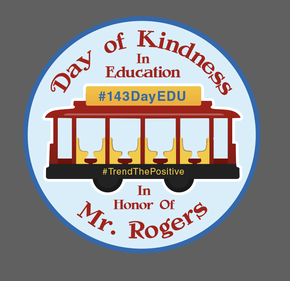 By Sean Gaillard and Jennifer Williams A renaissance for kindness has surfaced within the last few years as a vital component of a schoolhouse’s culture. Educators in classrooms all around the world are finding ways to slow things down a bit and take notice of acts of kindness and goodwill -- prioritizing relationships and making memories together along the way. Fred Rogers, children’s broadcasting icon, promoted kindness for 31 seasons in a simple and sincere way on the television masterpiece, “Mister Rogers Neighborhood.” In honor of Mr. Rogers, the state of Pennsylvania has designated May 23 (the 143rd day of the calendar year) as #143DayinPA. This stands as a tribute to homestate hero, Fred Rogers, and his favorite number. “143” is numeric code for “I Love You.” We thought it would be fitting to extend the 143 culture of kindness to education with the #143DayEdu hashtag. #143DayEdu Using the #143DayEdu hashtag, we are encouraging all educators to share examples of kindness happening on May 23. To join in on the fun, simply use #143DayEdu to promote acts of kindness and compassion happening in the schoolhouse. You are also invited to join us this Thursday, May 23 at 8:30 - 9:00 p.m. EDT for a special Twitter Chat where we intend to promote positivity and celebrate the enduring legacy of Fred Rogers. Here are the questions and times for Thursday night’s Twitter chat. To join, simply head over to Twitter by clicking HERE at 8:30pm ET and watch for the Qs from @smgaillard and @JenWilliamsEdu. Q1: Thinking back to Mr. Roger’s Neighborhood, what are some of your fondest memories of the show? (8:35 pm ET) Q2: What lessons can we learn from Mr. Rogers that we can apply to the classroom? (8:40 pm ET) Q3: How did you promote kindness in your school recently? (8:47pm ET) Q4: What are some ways we can finish the school year promoting kindness with our school communities? (8:53 pm ET) Pass it on As we prepare for #143DayEdu and the #143DayEdu Twitter chat, we invite you to consider this quote on kindness from Mr. Rogers along with these related resources. Please feel free to share the invitation for a Day of Kindness -- pass it on! We look forward to this special week and the opportunity to celebrate you -- just for being you! Imagine what our real neighborhoods would be like if each of us offered, as a matter of course, just one kind word to another person. WSKG (PBS/NPR), our #143DayEdu partner: Blog post
Thank you, Mr. Rogers: Blog post #143DayEdu Official Adobe Spark page 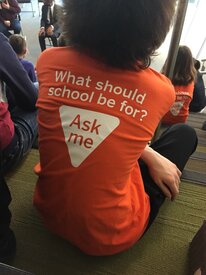
These days, conferences for educators seem to be on the right track in starting to understand that, as teachers, we need our learning to be directly connected to the learning of our students. Sitting in session rooms in distant conference centers far from our classrooms and our students is a bit risky--creating more space for making assumptions as opposed to making connections. With an understanding of the value, need, and importance of representative student voice, conferences now are finding ways to get kids into the conversations--and, particularly into the ones where big questions are being asked and ones where big decisions are being made.
Learning by Design, a learning event that is said to be less of a conference and more of “a point in a learner’s journey,” is certainly the best I have seen to date. During this three-day experience that takes place biennially at the International School of Brussels in Belgium, students are invited into the conversation with educators at every point --- and not as an afterthought, but by design.
Here are four ways I found students at that center followed by five LbD takeaways from Adi, a 6th grade student at ISB.
Photo Credits: ISBLbD Student Journalism Team
1. At the center through their perspectives.
As I arrived at the International School of Brussels, I was greeted in the Chateau, the white-as-snow 170-year old building that serves as the entrance into the 40-acre campus situated in the Forêt de Soignes. In the very first moments, I sensed that the students in brightly colored shirts that read “What should school be for? Ask me!” would be my partners in learning for the next several days. My first stop was the Logistics Meeting in the Middle School Collaboration Room to meet the other seven Invited Guests (no keynote speakers by design) and our two student hosts. One of our hosts, 10th grade student Emily, invited us to join her for a private tour of the elementary, middle, and high school buildings to help us to get to know the school. She shared her experiences, her worries, her joys, and her passions. She told of her work around creating healthy body images at ISB with her LbD project #NoNorm. Later, Emily would tell a room of 500 her vision of what school should be for. She would also inspire us to challenge our own assumptions and intended messages when she reflected so articulately on a world that told her she “could be anything”--a message she said that as a younger child she heard and interpreted as “you need to beeverything.” Just before the welcome ceremony and our first panel discussion “A Call to Action: What Does it Mean to Re-Imagine School?” Marial, a 12th grade student and our second student host, joined in. With images of peace painted on her cheeks, she apologized for missing our morning meeting, but then went onto share that she had just come from the city center where she had joined with thousands of other students in the Brussels#ClimateStrike student demonstration--a march she had been participating in every Thursday morning for the past several weeks. Along with Marial and Emily and global innovators Ewan McIntosh, Katie Martin, Cornelius Minor, Rebecca Bell,Niall de Búrca, Ed Bice, and Mathilde Dratwa, we set out with 500 others to dive deep into the question of “What should school be for?”--through panel discussions, workshopping, film clip provocations and conversation, inquiry, and connection--we aimed to figure it out together. 2. At the center through their ideas. Alongside the planning for the educator journey at #ISBLbD, classroom teachers and administrators had been prepping with students for months for their student journey. Following an application process, students in mixed-age teams organized around new ideas and innovation for a prototyping project. These Student Agency Teams came to LbD with a concept and, over the three-days, worked through phases of inspiration, ideation, and pitch. As Invited Guests, we met with the teams to offer feedback, mentorship, and counsel. LbD attendees were encouraged to visit teams in the library or cafeteria between sessions to help encourage and also prompt new thinking. On Day 3, with ideas focused and “elevator pitches” set to go, the students hosted a poster session to showcase their work and celebrate transitioning to the next stage of implementation. 3. At the center through their creativity and stories. The power of stories and storytelling was a major theme of sessions and conversations at LbD, and the students were not only part of the story of LbD, but they were also the storytellers. Each day, student performers inspired us with their songs. Student sketchnoters --having been coached during the week by professional graphic recorder Taryl Hansen-- joined for sessions to capture and synthesize shared ideas. A team of student journalists joined with the school’s marketing directors to tell the story through video, photos, and interviews. They took over Twitter, Facebook, Instagram, and the school website, and they created montage videos for the audience each day. The Humans of ISB project zoomed in on the lives of individual attendees, and these kids for sure captured my heart and spoke my language of media literacy!
During the days together at LbD, the flow of ideas continued as students shared thoughts and specific feedback on stickies on walls of photo portraits of all attendees. We finished up on Day 3 with a Conversation with Student Agency Teams, giving them an opportunity to voice what they would like to see in school. And, as you can see from reading this thread of tweets from the school leaders and faculty here on the right, the journey to keep students at the center of learning by design is one that continues on.
Interested in joining the global conversation on re-imagining school and education? Check out @IntSchBrussels and the hashtag #ISBLbD on Twitter, and be sure to follow these innovative educators that are continuing to push thinking and practice:
Front load concepts. Establish foundational knowledge. Make connections. Plant some seeds of inspiration. All instructional practices we as educators work to weave in prior to the start of a lesson with our students. In our classrooms, we seem to recognize the great power that "laying the groundwork" can have to support deeper and more personal understandings of new ideas, but how often are we applying this to our own learning as adults? When designing learning experiences for educators, are we building in that extra intentional pause -- the time that allows teachers to catch their breathe, come prepared, and become present and in the moment of learning? For the team at the International School of Brussels (ISB) organizing the Learning by Design conference (14-16 February), that start of the conversation was one that they were dedicated to cultivating and contextualizing well before the day that everyone was set to arrive onsite. By leveraging innovative communication technologies, educators in the ISB Learning by Design community were invited to join in for an #ISBLbD Twitter chat. Held weeks before the February event in Brussels, educators from around the globe came together for a 30-minute inspired online conversation to begin exploring the question of "What should school be for?" And, true to ISB's mission of "Everyone included. Everyone challenged. Everyone successful." the chat welcomed in not only expected attendees, but also anyone from anywhere who was interested in jumping into the discussion on re-imagining school and learning. For me, the chat served as that perfect pause -- a moment for us each to reflect on current conditions, to begin thinking on questions we hoped to explore together, and to have a few "nice-to-meet-you, see-you-in-Belgium" moments as we all looked ahead to when we would be together in person. Here are a few of my personal take-aways from the #ISBLbD chat: #1: Educators love being with other educators! 60 minute countdown. 30 minute countdown. 10 minute countdown. The excitement leading up to the chat was contagious! From Belgium to England to Singapore to Chicago, educators from everywhere it seemed were joining in and gearing up to chat. And, regardless if they were on the campus of ISB joining for the live Tweet-Up ("Twitter chat meet up") or if they were countries away joining from a train or a classroom or, like me, from home (with just my laptop and two puppies), it was evident that there was excitement around the idea of togetherness. Educators just love being with other educators! #2: Educators want students in the conversation. As we dove into answering big questions in our chat around "What should school be for?" it seemed we all knew right away that what we needed to help us work toward our collective answer was really less about "what we needed" and more about "who we needed"--students! As André Henry, IB teacher at ISB shared, "The opportunity to have students help shape the curriculum needs to happen." #4: Change is here. As chat participant Benoit Pernechele expressed in the #ISBLbD chat, "Change is happening." Sometimes slow and sometimes lightning fast (and, oftentimes messy)--change is here, and it is now. We recognized that change is a process--one that will require us to take inventory and together determine how we can keep and build on what is working and move away from what is not. #5: This was only just the start to the conversation...
...and, we have LOTS more questions to think on. With bags packed and my mind filled with "sticky note reminders" for exploring with my new #ISBLbD friends, I am set to fly out tomorrow and ready to immerse myself in the moment with 500 other dreamers and doers at Learning by Design. Yes, I am ready to break down and tackle this feels-oh-so-big-to-me question of "What should school be for?" Get ready to see what we come up with! Follow all the learning and sharing from the Learning by Design 2019 Conference by joining on Twitter with the hashtag #ISBLbD. For more information on Learning by Design and the work of the International School of Brussels, visit https://www.isb.be and follow on Twitter at @IntSchBrussels. |

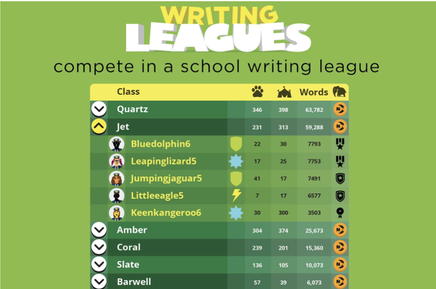
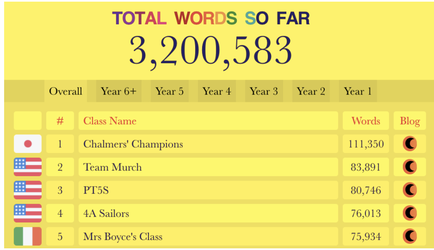
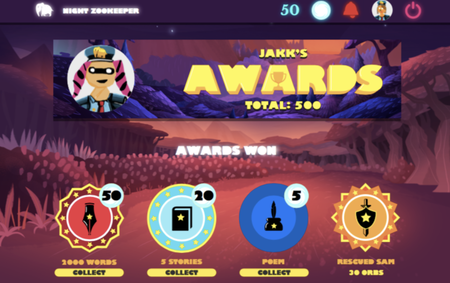




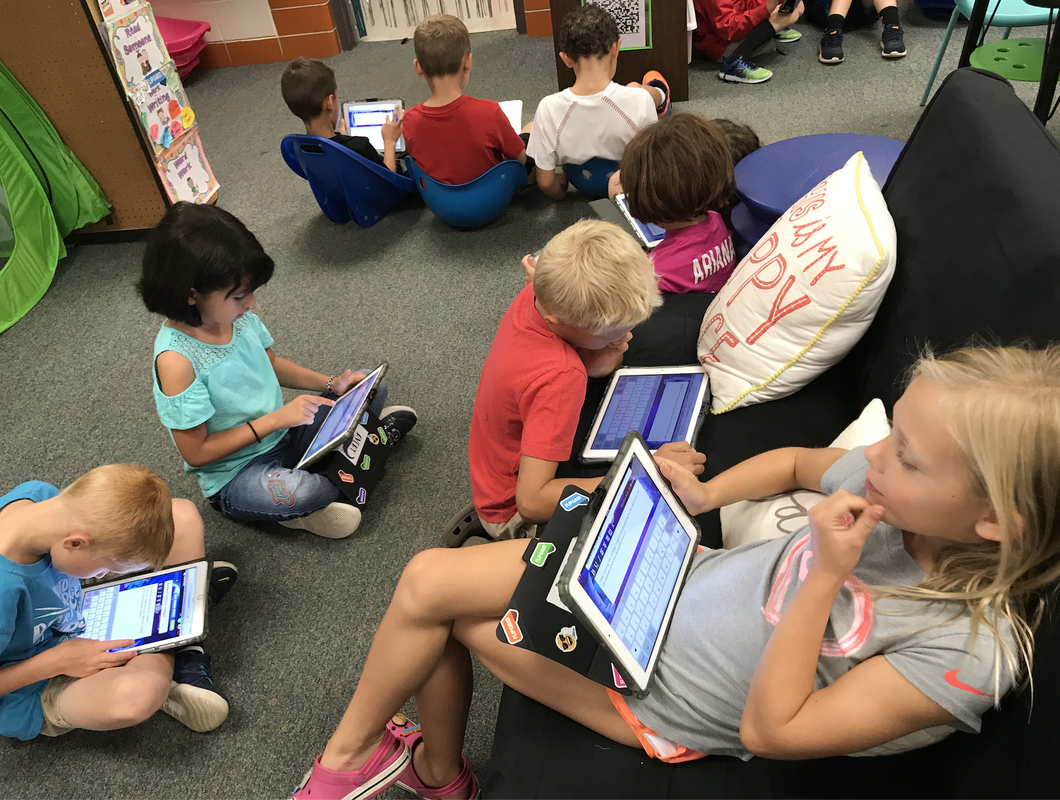
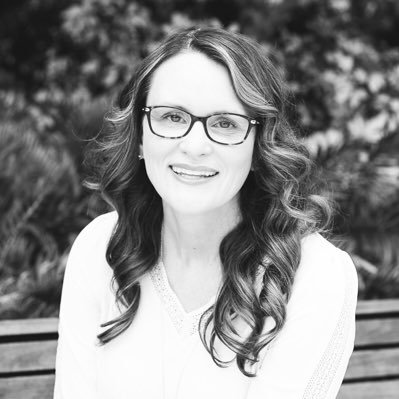
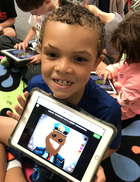
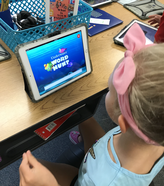
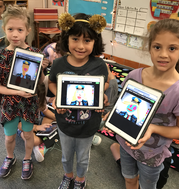
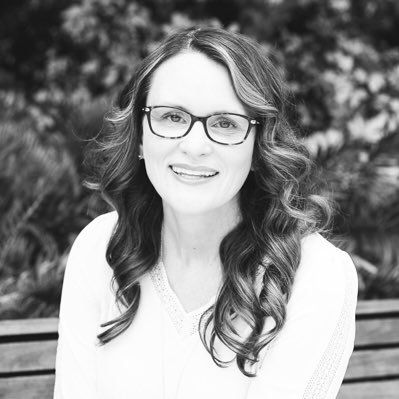
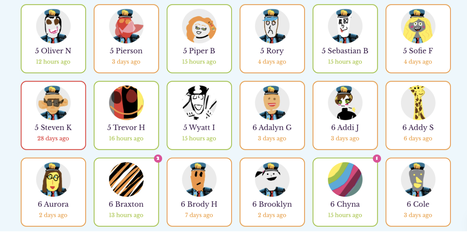
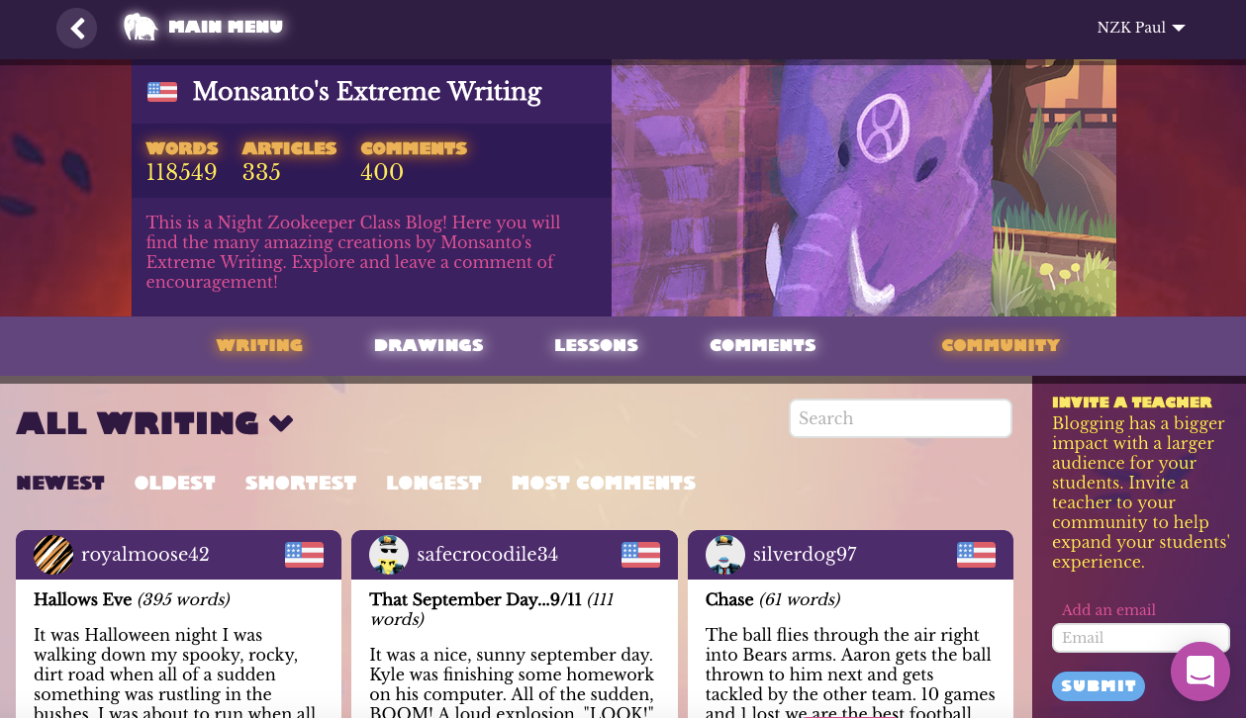
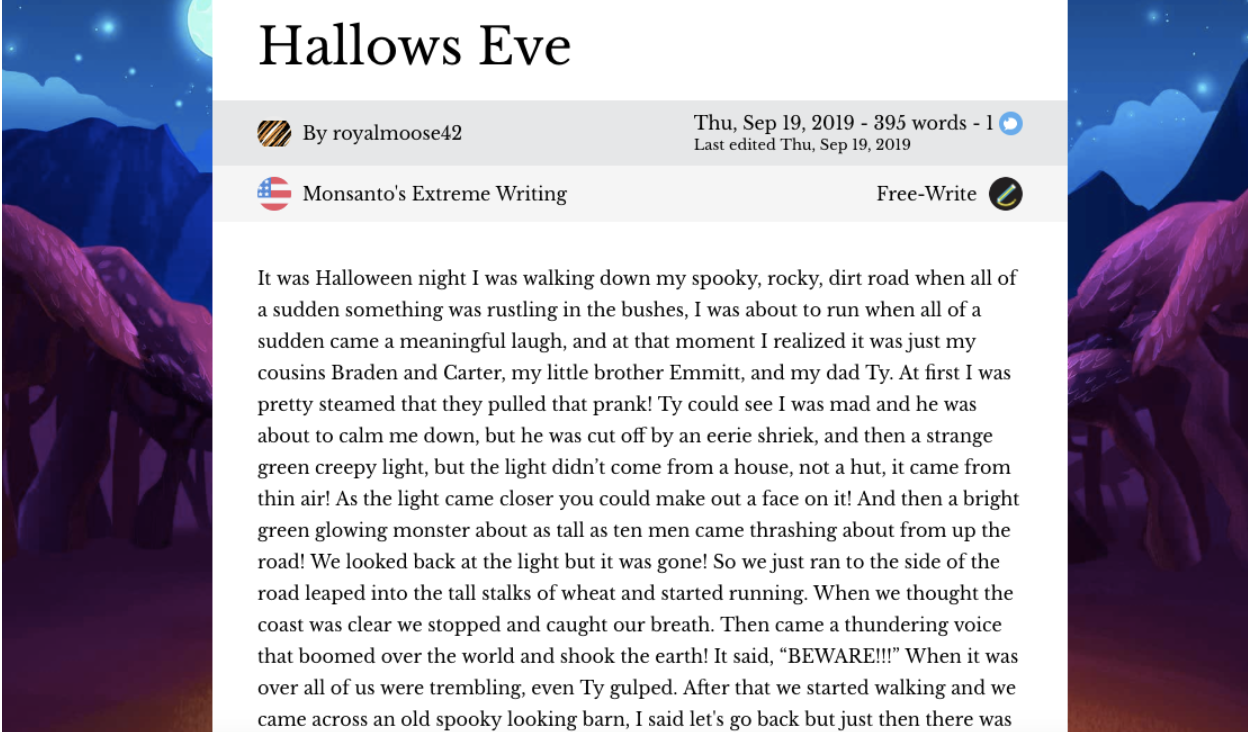
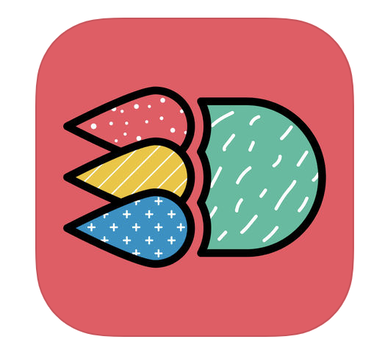
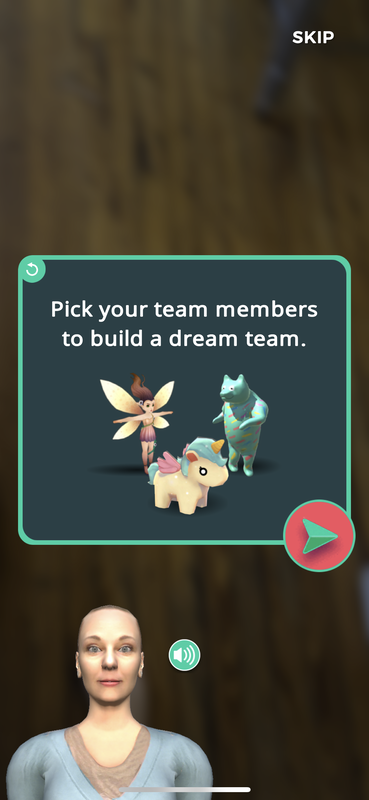
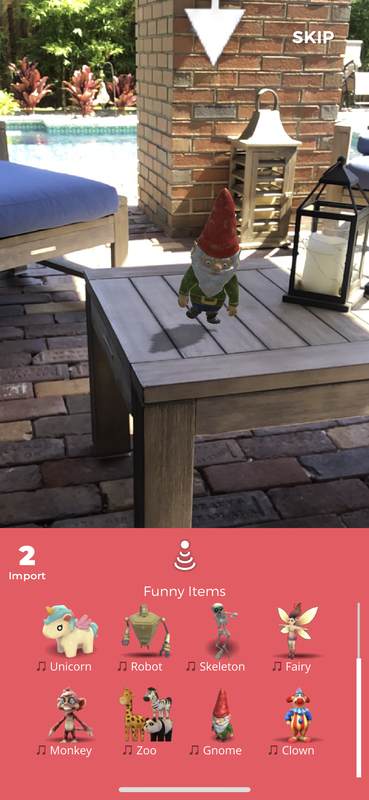
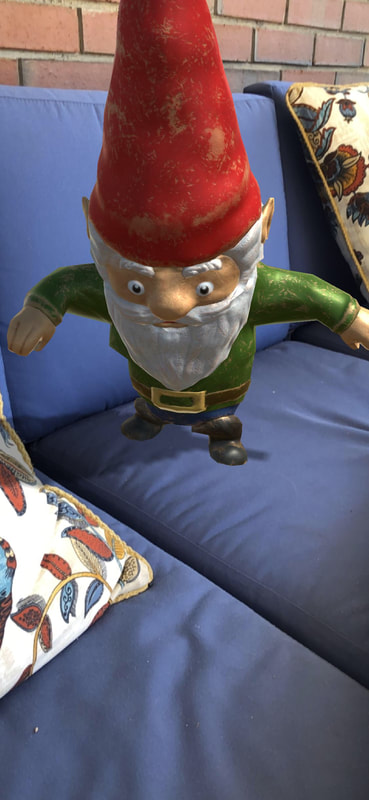
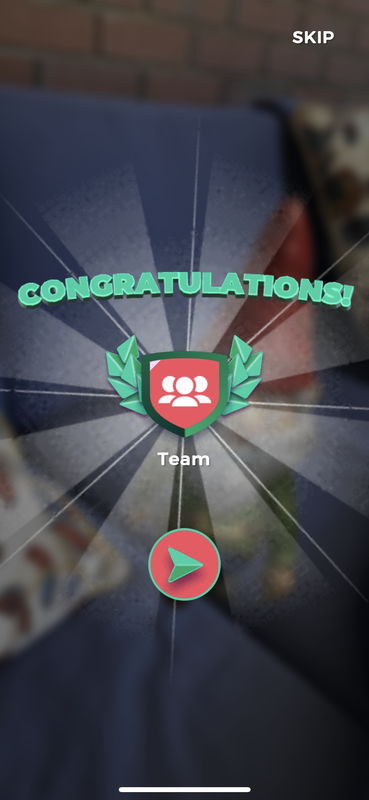
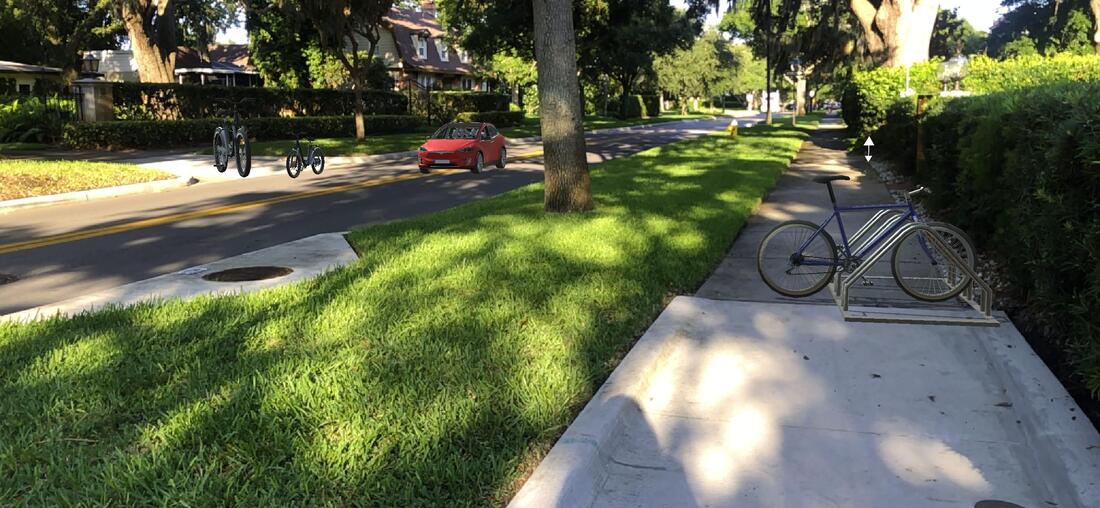
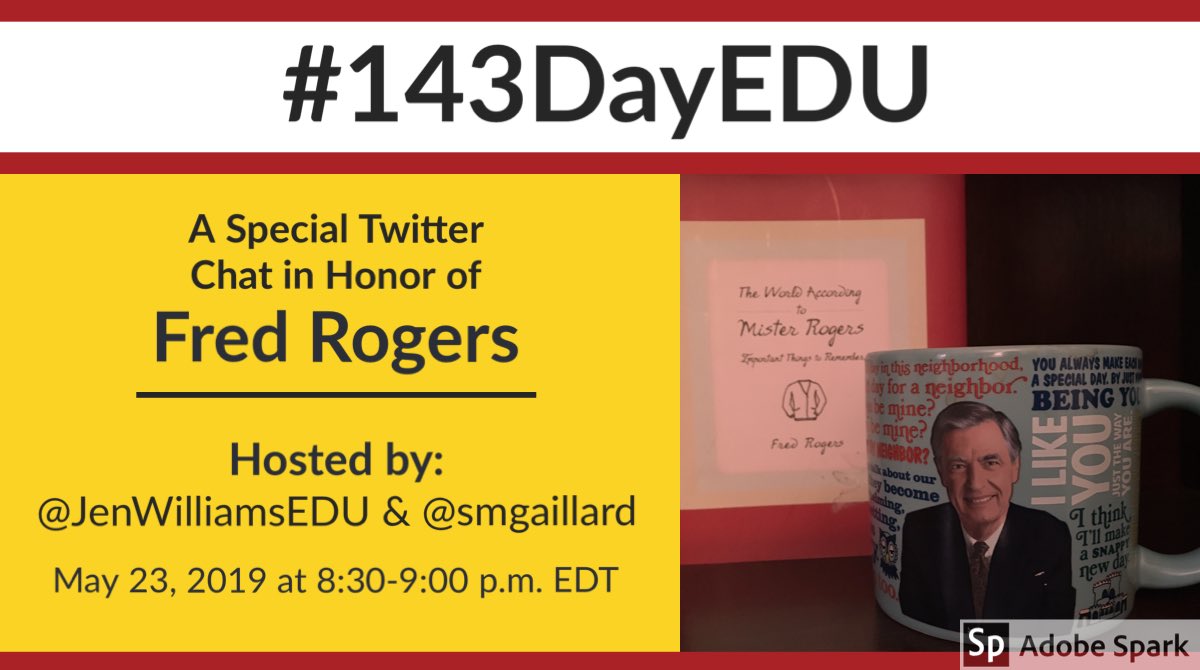
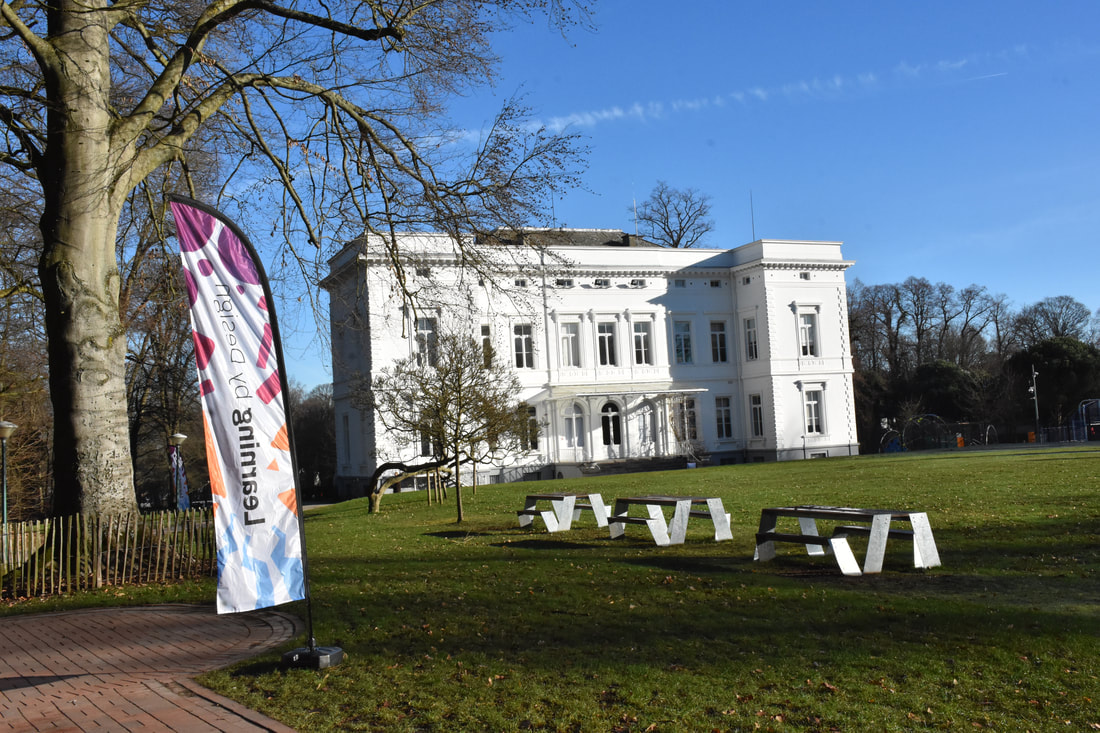
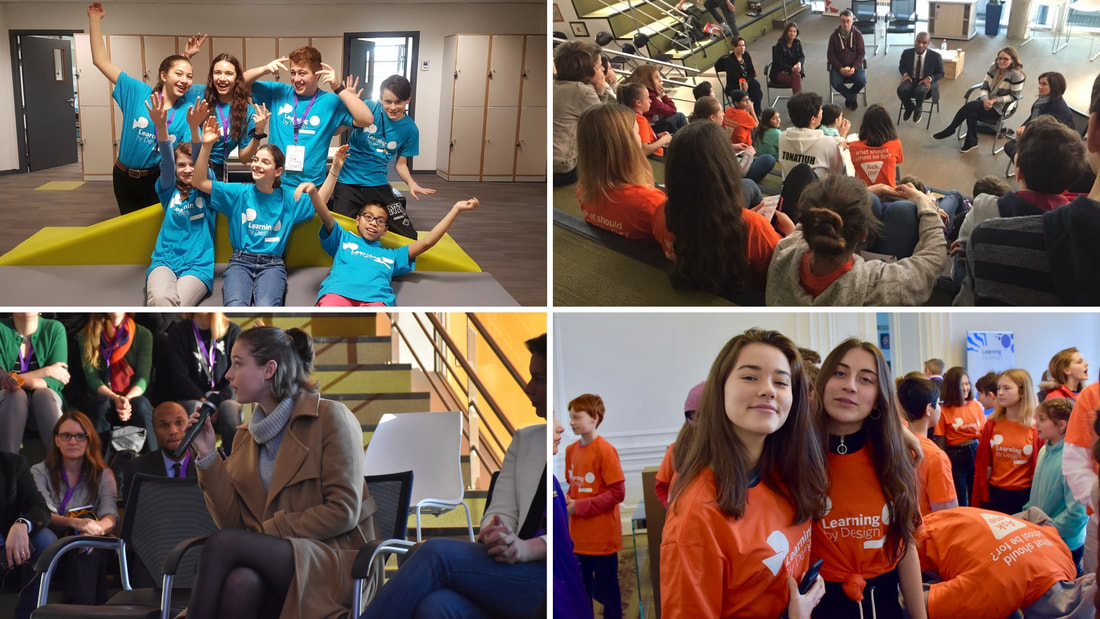
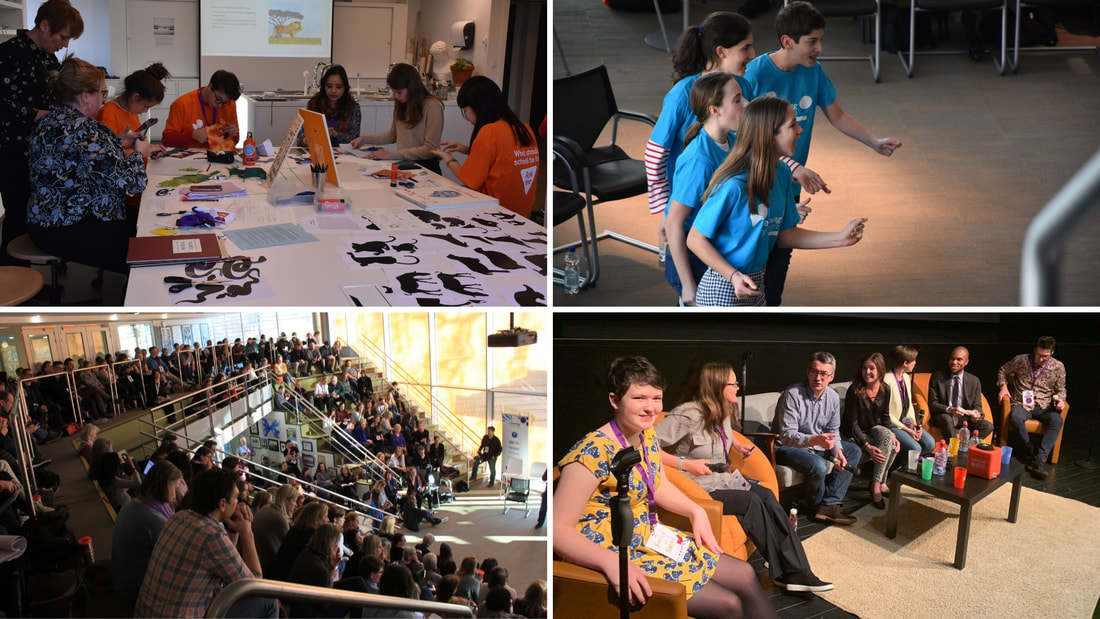
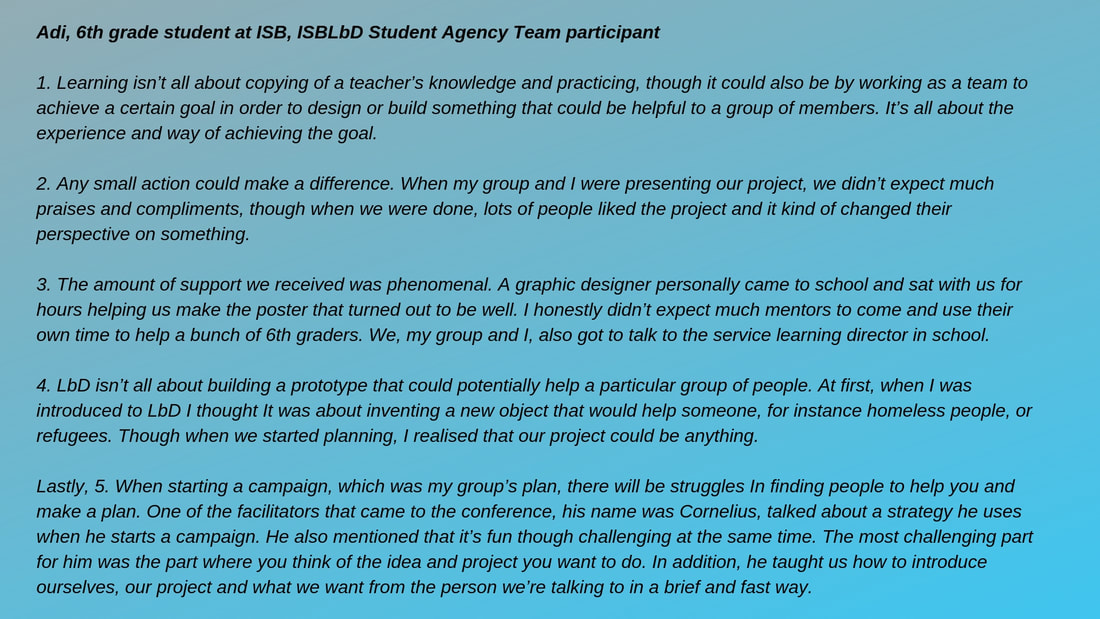
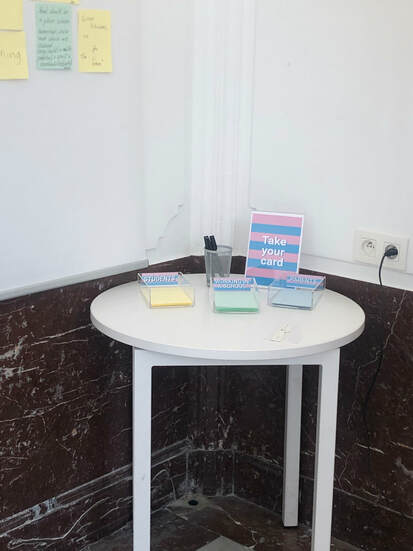
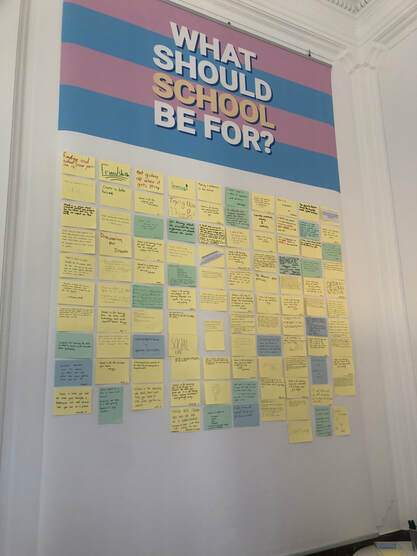
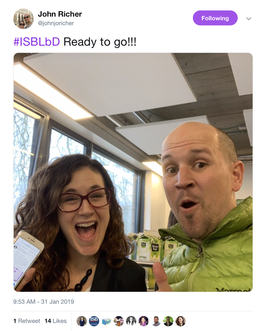
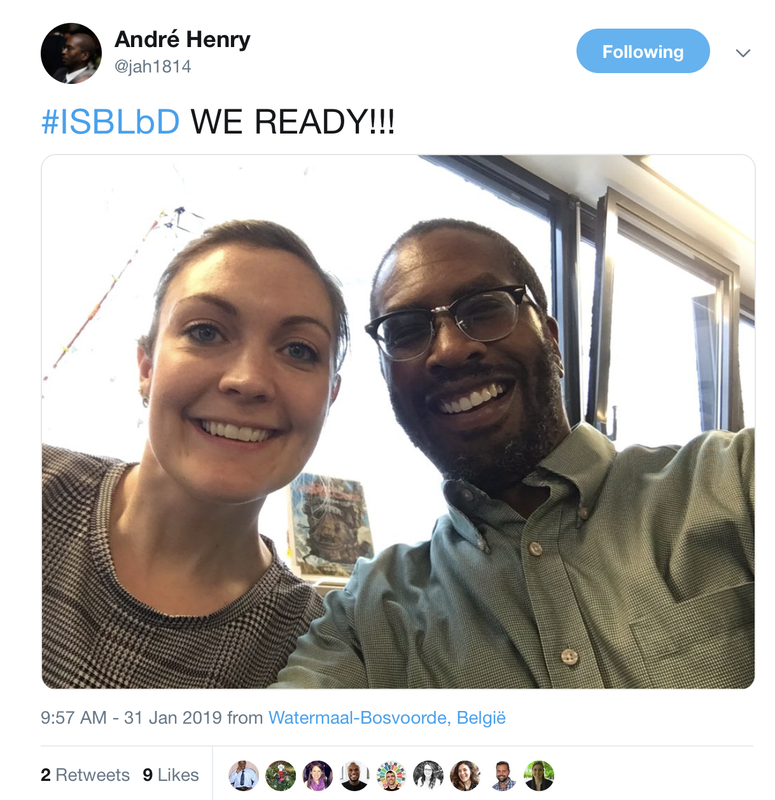
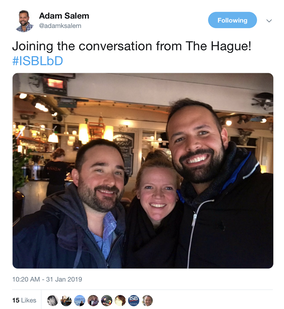
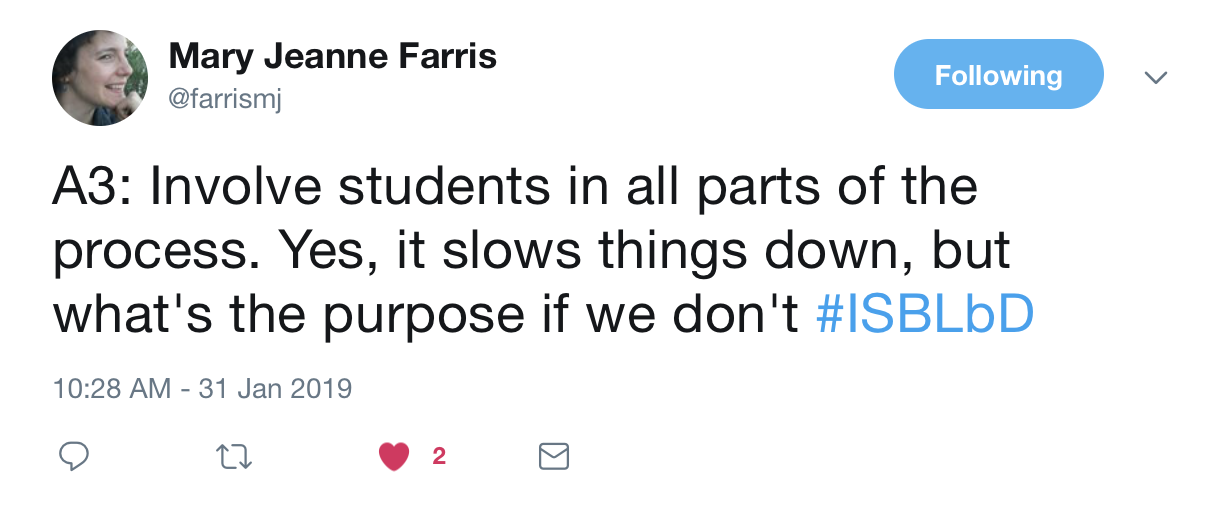
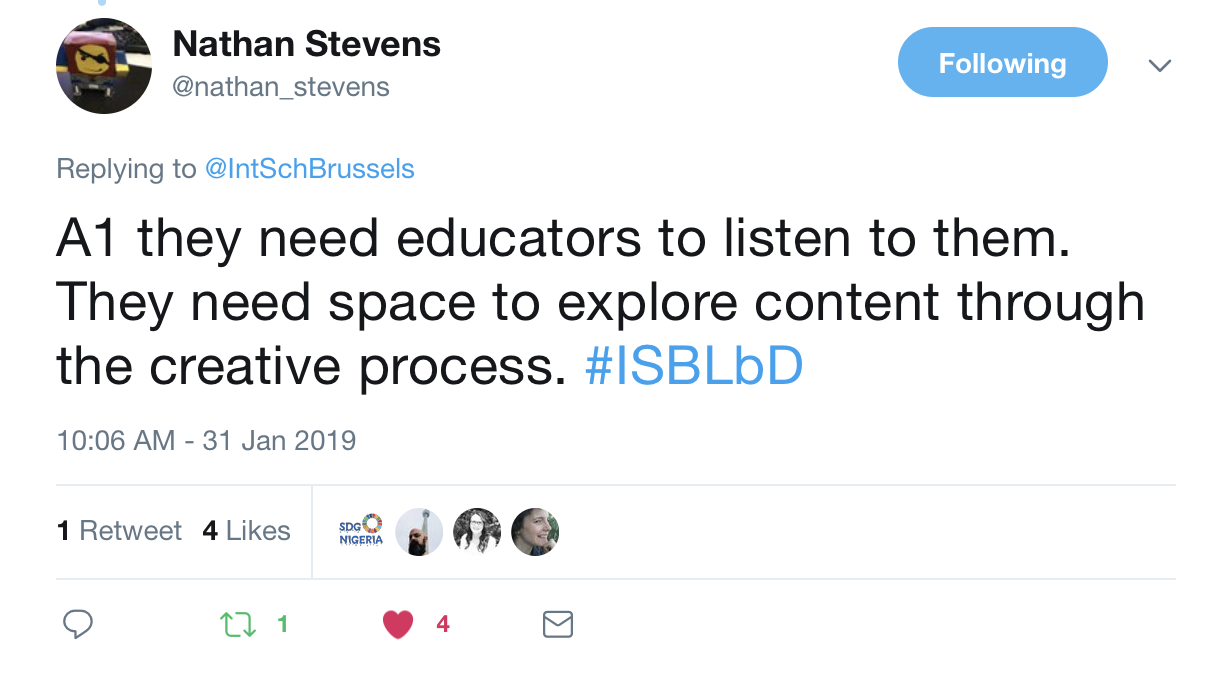
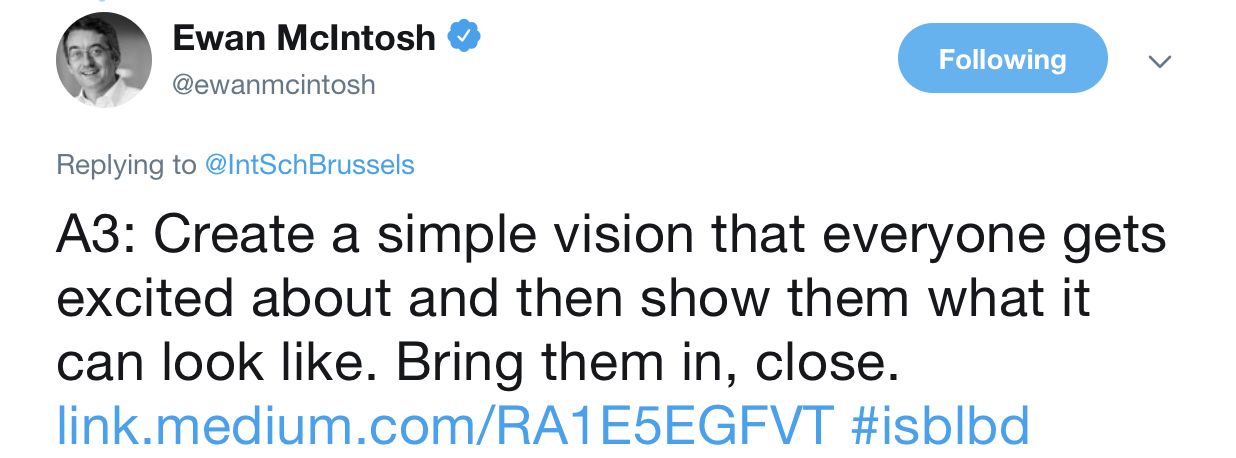
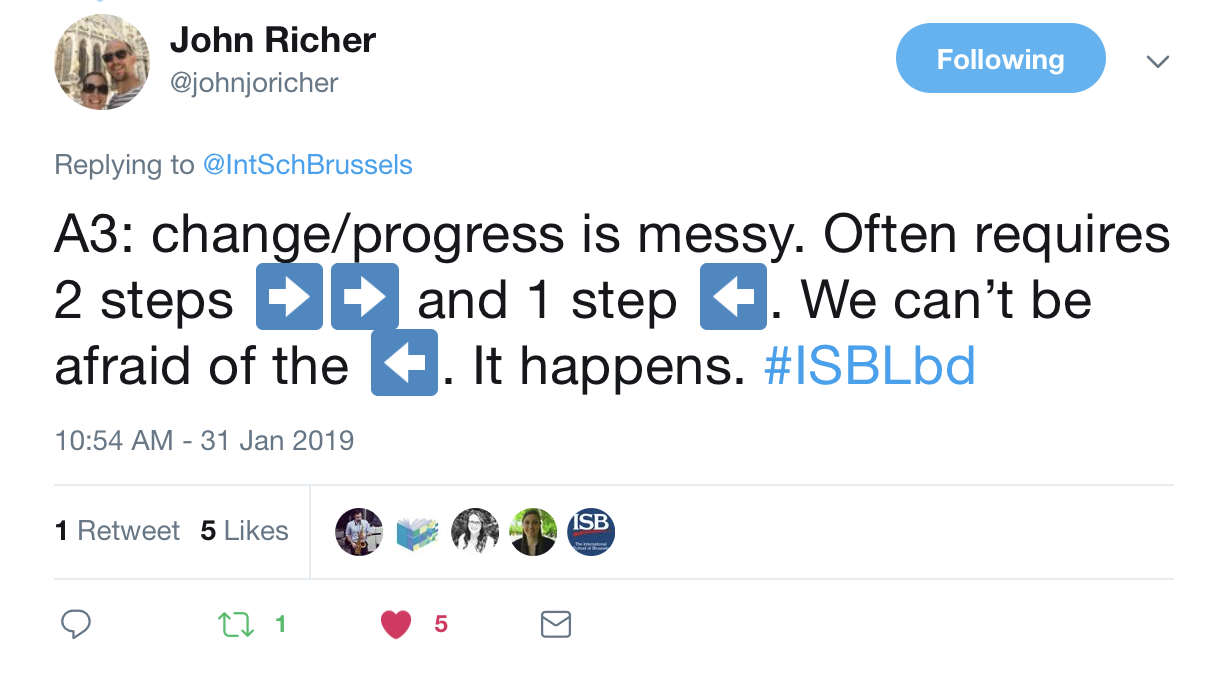
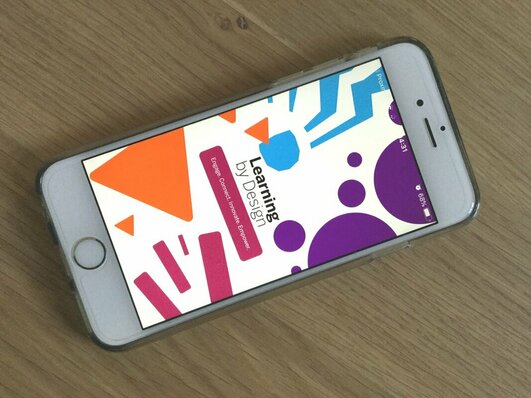
 RSS Feed
RSS Feed